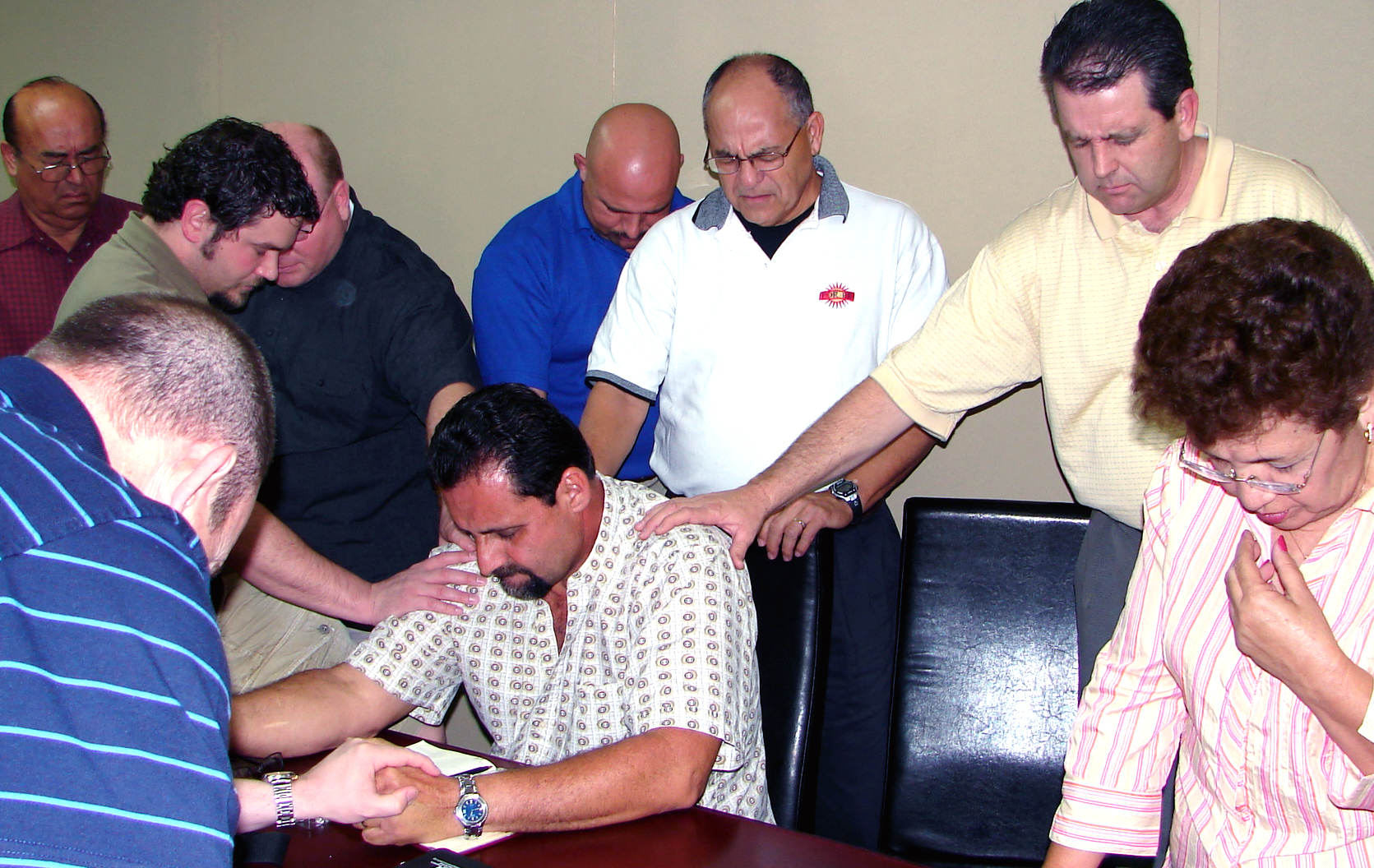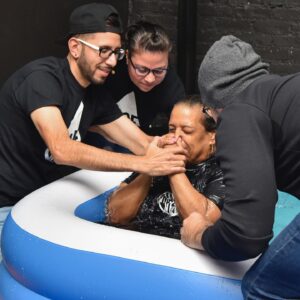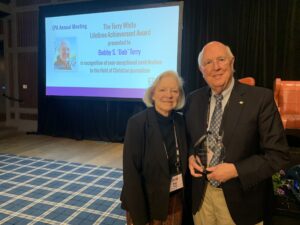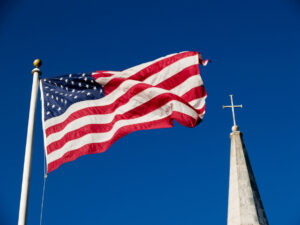
PONCE, Puerto Rico (BP)–Glenview Baptist Church has one of the highest baptism rates in the SBC each year. But the new converts aren’t immersed in “water.” They’re immersed in “agua.”
Glenview is in Ponce, Puerto Rico.
Many Southern Baptists may be surprised to learn that Puerto Rico, a U.S. territory since 1917, has a Baptist convention just like Tennessee or Michigan. Two-hundred-forty-one messengers from 41 churches voted in October 2001 to go from being a fellowship of churches to a full-fledged convention. In May 2004, SBC North American Mission Board trustees approved a cooperative agreement with the new convention.
Around 50 churches make up the Convenciòn Iglesias Bautistas del Sur de Puerto Rico (Convention of Southern Baptist Churches of Puerto Rico), which also covers the U.S. Virgin Islands.
Richard Harris, NAMB’s vice president for church growth, said Puerto Rico’s location and culture allows Baptists there to take the Gospel to places like Haiti and Cuba more easily than anyone else.
“Militarily, [Puerto Rico is] a strategic location,” Harris said. “Spiritually, they’re a strategic location — for Southern Baptists and the Kingdom.”
Ernesto (Rene) Pereira left a high-profile job as a university microbiologist and department director to pastor Glenview 30 years ago. It began in a living room with seven people and is now the largest SBC church on the island, filling its 1,000-seat auditorium three times each Sunday. It is also the largest church of any denomination in southern Puerto Rico. In addition to pastoring Glenview, Pereira is president of the two-year-old convention.
“We are a new convention. We know that we have to learn a lot. We don’t even know how to be a convention. For you in the States it’s normal to move in the convention environment. For us in Puerto Rico for 45 years, everything was decided in the States. Every decision was made in Atlanta,” Pereira said.
“So we are learning to be ourselves, to behave like a convention,” he said.
BRIEF HISTORY
Southern Baptist work on the island began in the 1950s. A seminary was established and the then-Home Mission Board (now NAMB) had an office. But after a while, the work tapered off.
Pereira and other officials at the new convention and at NAMB believe that much of the decline was due to a lack of indigenous leaders and a lack of focus on church planting.
Bob Sena, manager/field partner service representative in NAMB’s church planting group, said that is different now.
“We had an office in San Juan,” he said. “We had missionaries; we had a strategy. That has changed. We don’t have an office. We have a state convention. Puerto Ricans have a state convention.
“What was primarily a strategy of NAMB has become an indigenous work that is bubbling up and being led by Puerto Rico now.”
Pereira said it took a while to effect the change.
“I have been a Baptist for 30 years,” Pereira said, smiling. “I know how we do things. We are very organized. Sometimes that is good.
“We are the Queen Mary. We need a lot of sea to turn around. Sometimes we are behind,” he said.
The young convention, with Pereira at the helm, has developed a strategic plan for reaching the island. He as well as NAMB specialists believe they are on the cusp of a great movement of God.
SOUTHERN REVIVAL
“We are possibly in the middle — especially in the south [of the island] of what we can call a revival,” Pereira said. “In this church, for example, we have baptized over 100 persons for the last 10-15 years every year. We always receive a letter from the convention saying we are in the top 100 churches in the convention in baptisms. But this year we cannot describe what is going on. Since September of last year, we’ve had 205 baptisms — 156 this year.”
Because Puerto Ricans are very religious, Easter is always a big event at Glenview. Pereira said the church had 110 professions of faith on Easter and will be baptizing at least 80 of those in the coming weeks.
These baptism numbers don’t include the large number of baptisms being recorded at the island’s only federal penitentiary, which is nearby.
“Since August we have baptized 242 inmates,” Pereira said.
“We were not [until recently] reporting those [prison] baptisms. Last year we baptized well over 100 inmates, and it never went in the church report. The convention doesn’t know about those baptisms, because those inmates, most of them will never come to this church.
“Usually Baptists think that baptism is not only a testimony that you are a newborn person, but also that you are … a member of a church. So they were not reported. But I think they should be reported because they are members of the body of Christ.”
Such spiritual gains are being experienced in churches all over the southern half of the island.
“I would like to say that it is like this on the rest of the island,” he said. “But it’s not. We lack key churches.”
By “the rest of the island” he was talking about the northern half, namely the metropolitan area of San Juan and surrounding towns, where more than half the island’s population lives. This is despite the presence of the seminary in San Juan, which is now affiliated with Southeastern Baptist Theological Seminary in Wake Forest, N.C.
Pereira said there are no more than 1,000 members in all the SBC churches in north Puerto Rico combined.
CATCHING A VISION
This lostness in the northern part of the island is one reason NAMB hosted a Vision Tour to San Juan in the fall of 2004. A Vision Tour is a way for the leadership from a newer or smaller Baptist convention to show outsiders the spiritual need of their area.
The tour group included leaders from NAMB and the Tennessee Baptist Convention, many from the Nashville Baptist Association.
The stateside leaders were impressed with the leadership in Puerto Rico and affected by the spiritual challenges on the island. Many of them began to discuss ways the state convention and local association could partner with Puerto Rican churches.
“When we place a face on missions, Southern Baptists respond,” Sena said.
Tour group members remained in contact for the next year, discussing what the next step should be in a potential partnership.
Then, in March, most of the group returned, this time accompanied by lay leaders from Nashville-area churches so they could get an idea of the help needed and figure out how their churches could help.
NORTHERN STRATEGY
The first place the group visited was Glenview Baptist for a meeting with Pereira.
“We want to tell you that we would like for the rest of the island to have the experience that is going on in the south,” he said. “We lack key churches.” To him, a key church is one that is growing and established and able to plant other churches.
“We have a key church in Aguadilla in the west. We have a key church in Lares, that is a small town in the center, where you usually don’t expect a 700-member Southern Baptist church. Seven hundred persons in a tent. It’s hot. No air conditioning. If it rains, it flows [on] your feet. But it’s growing very fast.”
And a thriving church is in Arecibo in the northern part of the island.
But the rest of the key churches are in the south. One of the convention’s goals is to reach the whole island — specifically, to plant 50 churches in 10 years. They’ll begin by planting three or four in 2006.
“We need a key church [in north Puerto Rico],” Pereira said. “We need a dreamer. We need people who have pain in their hearts. I define ‘call’ as synonymous with pain in your heart. When you have a call, you have pain in your heart. If you don’t have a pain in your heart, you better look for another thing to do.”
Jorge Alvarez has that pain. The former truck driver now pastors the church in Arecibo, Primera Iglesia Bautista. Alvarez addressed the group at the March meeting at Glenview.
In introducing Alvarez, Pereira joked that you better know where you’re going if you visit the Arecibo church. If you get lost, you’ll wind up in trouble. Through a translator, Alvarez showed slides and told of his church’s ministry to Arecibo’s outcasts — drug dealers, prostitutes and others.
Pereira said the convention is waiting for more people like Alvarez — men who are burdened and visionary — to lead the effort in the north.
It is this strategic approach to church planting — waiting for the right person and the right time — that gives Harris great confidence in the future of the Puerto Rico convention.
“This is a God-sized vision,” Harris said. “[The convention] started one church in 2004 and three last year. For them to move this up to five per year for 10 years is pretty dramatic. But I think it’s well within their reach. They’re not trying to grow these off of transfer of members; they’re trying to penetrate lostness. [Pereira] sees so many people like he was, trying to search though life and find direction.”
Harris has no doubts about Pereira’s abilities.
“Rene is one of the most tried and proven leaders in Southern Baptist life, period, but certainly in the Virgin Islands and Puerto Rico,” Harris said. “He is highly esteemed and very effective.”
Pereira in no way intends for any partnership to be one-sided. Any help he gets from churches in the States will be returned.
He chided the pastors present for not knowing how to reach Hispanics in their own communities. He was only half joking, and the pastors in the room smiled but also nodded in agreement.
Pereira said he would love for the work to be reciprocal — with Puerto Rican Baptists both receiving help from stateside churches and giving it back — in the form of culture training and other assistance with Hispanic ministries in the States.
“I think we can learn from each other,” he said.
–30–
















